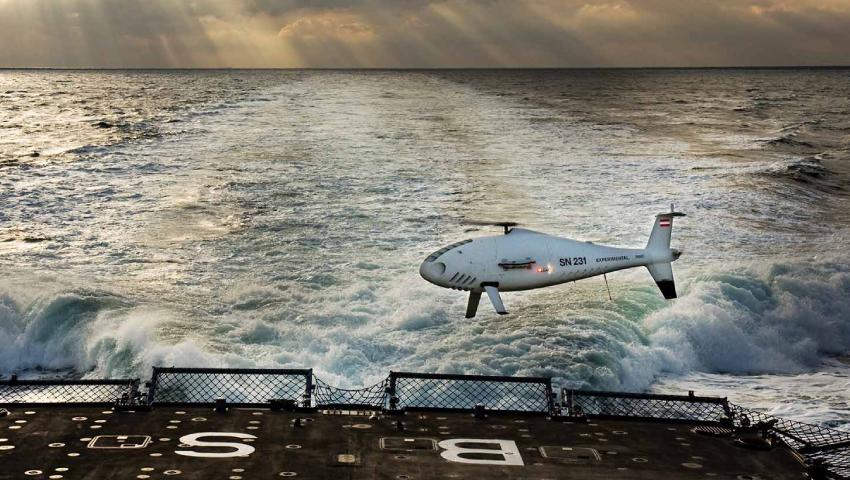The Royal Australian Navy is set to receive a fleet of the ISR drones, with Defence rubber-stamping an expedited order.
The Commonwealth government has greenlit the purchase of Schiebel S-100 Camcopter drones for the Royal Australian Navy (RAN) as part of the SEA 129 Phase 5 Block One project.
The order bypasses the tender process for the Maritime Unmanned Aircraft System Continuous Development program, with the Schiebel Pacific platform, supported by Raytheon Australia, selected among alternative offerings proposed by a group of shortlisted candidates, which included BAE Systems Australia, Northrup Grumman Australia, and Insitu Pacific.
In October 2020, Raytheon Australia pledged to set up an Asia-Pacific manufacturing and sustainment hub for S-100 UAS in the Shoalhaven region of NSW.
In a statement, Schiebel Pacific has now confirmed the UAS platforms would be designed, developed, manufactured, integrated and supported locally.
This is tipped to generate approximately 100 new local jobs.
"Schiebel Pacific welcomes the decision of the Commonwealth of Australia to speed up the provision of its UAS capability by initiating a single source acquisition of the Camcopter S-100," the company stated.
"This will enable the RAN to accelerate the capability acquisition they need and together with our local partners, we are committed to deliver the best UAS solution for the Royal Australian Navy."
The platforms, set to perform intelligence, surveillance, and reconnaissance (ISR) missions, are expected to be deployed from the RAN’s Anzac Class frigates and Arafura Class offshore patrol vessels (OPVs).
The unmanned aerial system (UAS) has been on trial with the RAN since 2016 after it was selected following a request for tender (RFT) for Navy Minor Project (NMP) 1942, which sought to procure a “proven” VTOL Maritime Tactical Unmanned Aircraft System – Interim Capability (MTUAS-IC) and associated engineering and logistics support for the Navy.
Last year, Schiebel Group secured a three-year contract extension to sustain the interim test platforms, which includes field support services, engineering and logistics elements, and the establishment of a sovereign Australian Camcopter S-100 training capability, delivered by Schiebel Pacific.
The Camcopter S-100 is billed as a small-medium sized vertical take-off and landing (VTOL) aircraft made of titanium and carbon fibre materials.
The platform is designed to carry multiple payloads simultaneously for up to six hours at a time.
The Camcopter S-100 can reportedly operate day and night, under adverse weather conditions, with a range out to 200 kilometres, both on land and at sea.
The unmanned aircraft can navigate automatically via pre-programmed GPS waypoints or can be operated directly with a pilot control unit.
The platform is operated via a point-and-click graphical user interface, transmitting high-definition payload imagery to the control station in real time.
By leveraging “fly-by-wire” technology controlled by redundant flight computers, the UAS can complete its mission automatically.
This latest investment in unmanned capability follows the Commonwealth government’s decision to scrap the SkyGuardian program under the AIR 7003 Phase 1 project.
Defence industry stakeholders and analysts criticised the government’s decision, noting a lack of investment in unmanned capability.
However, a Defence spokesperson told Defence Connect that the SkyGuardian project was axed following advice from Defence officials, with government deciding to reallocate funds for Project REDSPICE (Resilience, Effects, Defence, Space, Intelligence, Cyber, and Enablers) – a $9.9 billion investment over the next decade in the Australian Signals Directorate (ASD).
[Related: Australia’s MQ-9B SkyGuardian project axed]








